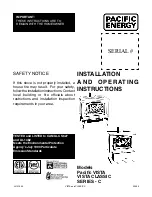
FUEL
8
BRENNSTOFFE
Welches ist der optimale Brennstoff?
Gas (
➜
Düse 35)
Gas ist klasse, mein Lieblingsbrennstoff! Beim Anzünden brauche ich weder
zu pumpen, noch vorzuheizen. Es brennt fast rückstandsfrei (Kocher und
Geschirr verschmutzen nicht, und es bleibt nur Wasserdampf und Kohlen-
dioxyd zurück). Die Kartuschen sind
auslaufsicher. Der Energiegehalt ist
sehr hoch (d.h. Gas ist als Gepäck
sehr leicht). Es bleiben keine Ge-
schmacksrückstände im Essen oder
der Ausrüstung. Und spezielle Gas-
Mischungen wie das Primus-Flüssig-
gas arbeiten auch in der Höhe
prima. Das einzige Problem: man
darf Kartuschen nicht im Flieger mit-
nehmen, und man kann nicht immer
und überall passende Kartuschen
kaufen.
Benzin (
➜
Düse 35)
Wo Autos fahren, gibt es auch Benzin. Und Autos fahren fast überall. Weiter
ist Benzin von allen Flüssigbrennstoffen am leichtesten entzündlich. Das ist
Vor- und Nachteil zugleich. Vorteil: man kann den Kocher schnell vorheizen.
Nachteil: Explosionsgefahr (aus diesem Grund ist das Rauchen an Tankstellen
verboten). Von allen Brennstoffen ist Benzin der gefährlichste. Weitere Nachteile
sind die sehr unterschiedlichen Qualität und Arten von Benzin. Es gibt
Die Primus-Düsen
Die Düse
ist das „kleine, runde Messingding“,
das im „Herzen“ des Brenners eingeschraubt ist.
Je nachdem, welchen Brennstoff Sie verwenden
wollen, müssen Sie die passende Düse einsetzen.
Die Düse mit der Aufschrift 35 (= 0,35 mm
Durchmesser) eignet sich für Gas und alle blei-
freien Benzinarten.
Die Düse mit Aufschrift 28 (= 0,28 mm
Durchmesser) eignet sich für alle anderen
Flüssigbrennstoffe.
Prüfen Sie, daß immer die richtige Düse einge-
setzt ist. Wenn die falsche Düse montiert ist, müs-
sen Sie sie austauschen. Mit dem mitgelieferten
Multiwerkzeug
klappt das problemlos (siehe
auch Seite 34 „Düse reinigen“).
20
4
What fuel is the best?
Gas (
➜
jet nipple 35)
Gas cartridges are great. It’s my favourite fuel! I don’t need to pump while
lighting the stove, nor do I need to pre-heat the stove (this is also known as
priming). It burns without leaving residues (stove and dishes/pots don’t get
soiled and only steam and CO
2
remain). The cartridges are leak-
proof and the ratio of fuel weight to
energy is very high, making it one of
the most efficient fuels. It leaves no
aftertaste or smell in your food or
equipment. Special gas mixtures like
Primus Liquid Gas works well, even
at high altitudes. There is only one
problem: gas cartridges are not
allowed on airplanes, and it may
occasionally be difficult to find the right cartridge in some parts of the world.
White gas (petrol) (
➜
jet nipple 35)
Where there are cars there is fuel, and cars are almost everywhere. Petrol is
the most inflammable of all liquid fuels. This means both advantages and dis-
advantages. Advantage: priming of the stove takes only a short while.
Disadvantage: petrol vapours are highly explosive (that’s why it is forbidden
to smoke at petrol stations). It is the most hazardous of all fuels.
The Primus jet nipples
Your stove comes complete with several different
jet nipples. The jet nipple
is the little, circular
brass part which is screwed into the center of the
stove. You must use the appropriate jet nipple for
the kind of fuel you will be using.
The jet nipple marked 35 (= 0.35 mm) is for gas
and all lead-free petrol types.
The jet nipple marked 28 (= 0.28 mm) is for all
other liquid fuels.
Please check that the right jet nipple has been
installed. Use the multi-tool
which is provided
with the stove to switch nipples (see p.35 on how
to clean the jet nipple).
20
4
Primus Manual RZ 1-10-04 14.39 Sida 8








































